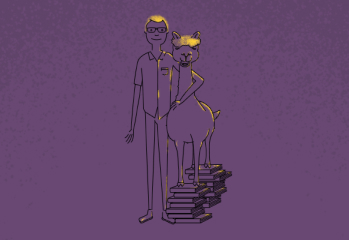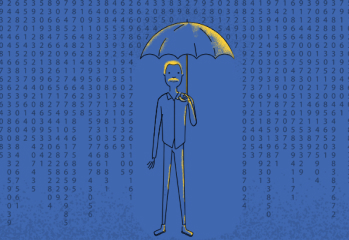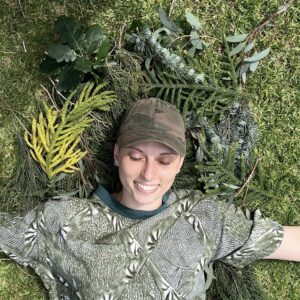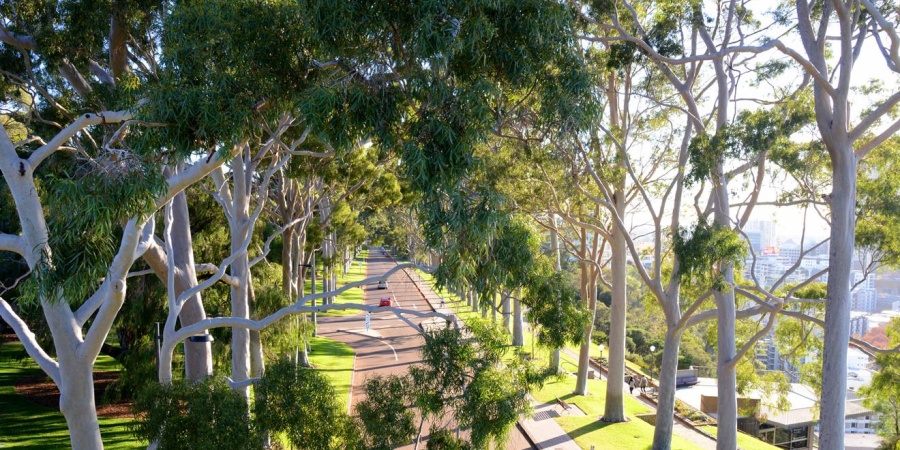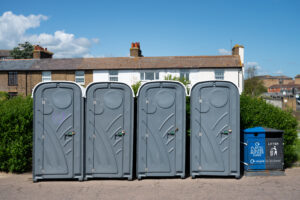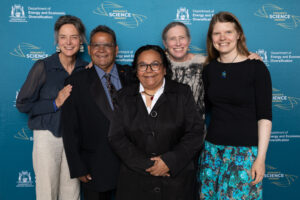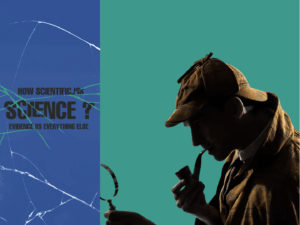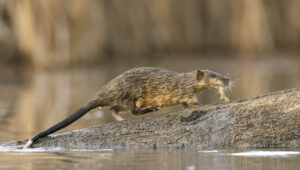Walking beneath the dappled canopy of a towering tuart tree in Kaarta Gar-up/Kings Park, I pause to feel the rough bark and watch light slip through the leaves. My skin burns in the heat, dry soil crumbles underfoot.
I look up, scanning for signs of stress: a thinning canopy, scorched leaves, bare limbs.
In these moments of deep awareness, the connection between human and tree is palpable – a relationship that can’t be fully measured, yet important to scientists.
In our heating climate, taking time to notice tree health and record what we observe are vital tools for care.
Scorching canopies
The past two summers have brought record-breaking heat, prolonged drought and minimal rainfall. This has placed enormous stress on southwest WA’s ecosystems.
In a media release, Associate Professor Sally Thompson says that “vegetation in Western Australia is suffering, with mass plant death that some have likened to coral bleaching events”.
This is happening across Noongar Boodja, where Noongar people have lived since time immemorial. Listening, tending and living in reciprocity with Country.
Dr Noel Nannup is a Whadjuk Noongar Elder. “When we talk about Country, we are talking about everything: the trees, the water, the animals, the people,” he says.
“Caring for trees is caring for everything.”
Caption: Professor Sally Thompson
Credit: Supplied CWSS
Living with trees
In today’s modern, technology-laden era, a phenomenon called plant blindness is common, particularly in cities and other urbanised areas.
This causes trees and other plants to fade into the background of people’s awareness.
This could be experienced as trees blending together as a green mass or greenery falling out of consciousness more completely. Perhaps on a rushed commute to work. Eyes on the path ahead, too busy to look out and notice.
Though trees are more than scenery. They are part of how we live and make sense of place.
“Everything is interconnected,” says Noel.
“The trees, the water, the fire, the animals, the people. If one part is hurting, the whole system feels it.”
When you relate to trees in this way – as companions, elders or neighbours – something shifts.
Through building a relationship with trees, care grows not out of obligation, but from connection.
Where science meets community
The simple act of noticing and tracking changes in local trees can help shape climate science.
The Canopy Resilience Project from UWA’s Centre for Water and Spatial Science (CWSS) is based on just this.
They’re calling on the public to help track how extreme heat and drought are affecting trees across southwest WA.
It’s a citizen science initiative that pairs satellite imaging with on-the-ground observations.
Satellites can show broad patterns but can’t capture whether a tree is dead, dormant or stressed. This is where community input comes in.
Dr John Duncan is a climate researcher and data scientist working on the project.
“The citizen science data is like a Google Translate for the satellite images,” he says.
Lab coats aren’t required to make a difference. Sharp eyes and grassroots knowledge are just what researchers need.
Contributing might seem small, but John and other CWSS researchers turn your observations into real data.

Credit: Cat Williams
The growing impact
Since launching, the project has received more than 14,000 submissions.
Most come from Perth suburbs, though sightings stretch throughout the southwest and all the way up to Shark Bay.
“Without the citizen science data, we’re unable to interpret what we really care about – indications of tree health,” John says.
Citizen-collected data is feeding into other research projects at CWSS, including a PhD exploring which trees are coping with climate extremes, which are not and why.
More broadly, this data is supporting environmental planning, conservation and climate response.
With each tree observed, the picture becomes clearer, the science more powerful and our future a little more hopeful.
Care and connection
In Naarm/Melbourne, over 70,000 trees were given email addresses as part of the City of Melbourne Urban Forest strategy.
Members of the public were asked to provide updates on local tree health, though the trees’ inboxes became flooded with love letters.
Locals weren’t just flagging damage, they were sharing messages of adoration, acknowledgement and apologies.
WA’s trees haven’t received fan mail (yet), though John says the volume of responses shows that community concern is deeply rooted.
The responses aren’t just data – they’re hope for a cooler, greener future.
Looking after trees is about more than conservation. It’s about connection.
“It starts with relationship,” Noel says. “That’s the first step to caring.”
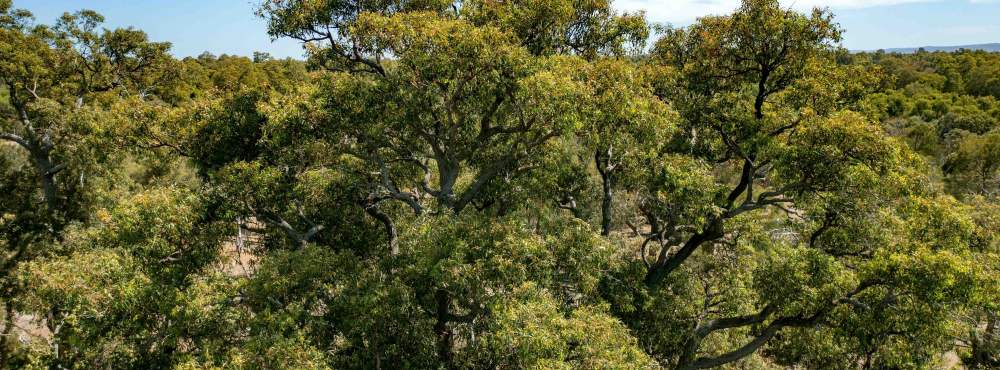
Credit: Whiteman Park Authority/Government of Western Australia
Building a relationship with trees
Developing a relationship requires time, attention and a willingness to understand.
Do you remember the last time you shared this with a tree?
Looking carefully into a canopy or pressing your hand gently into a tree’s bark – not just in passing, but with real attention. With recognition of the tree’s being.
There’s a kind of quiet that opens up in these moments. Not a silence, but a hum.
Noel wants us to listen in these moments. He hopes that all people will “learn to hear Country”.
To develop a connection with the natural world that is founded on reciprocity and a deep respect. This will set us on the right path for living in ecological harmony.
John echoes this sentiment. “If we’re serious about responding to climate change, a big part of that is understanding how we care,” he says.
Want to care for your local trees?
Whether you’re a tree hugger, a park lover or scientifically minded, there are various ways to be involved.
You could log your observations with the Canopy Resilience Project and learn more about stressed tree signals.
Perhaps talking to neighbours or joining a local bush regeneration group is more your style.
Or you could listen. Listen to Country. Listen to the trees, and connect.
